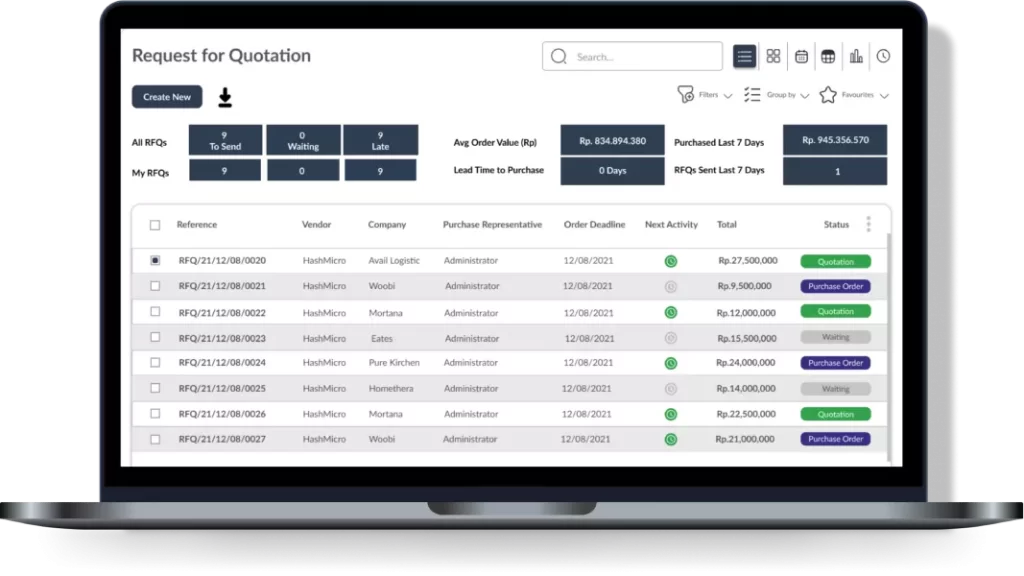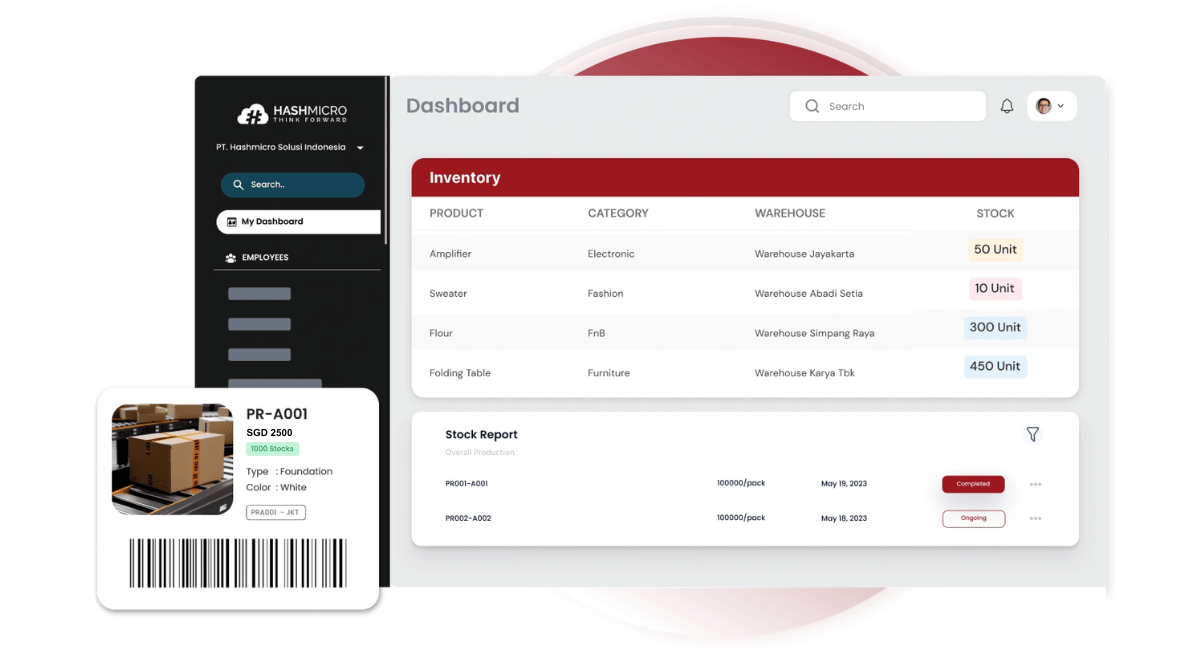Why is stock inventory management crucial in business, particularly within Singapore’s vibrant economic landscape? Picture this: in a bustling hub like Singapore, where trade and commerce are at the heart of its dynamism, the significance of effective stock inventory management becomes more pronounced.
These issues lead to increased operational costs and lost revenue opportunities, underscoring the vital importance of robust inventory control in this highly competitive market.
In exploring the intricacies of stock inventory management, it becomes evident that its role extends beyond mere organization, it serves as a linchpin for operational efficiency, customer satisfaction, and ultimately, sustained profitability in Singapore’s bustling business landscape.
Key Takeaways
|
Table of Content:
Table of Content

Why Businesses Must Optimize Stock Inventory Management?
Effective warehouse management is crucial for business success, offering benefits like reducing damaged merchandise and enhancing customer service through streamlined processes. Achieving higher reorder point accuracy and integrating real-time information systems, such as barcode technology, further optimizes inventory management.
Additionally, robust stock management serves as a deterrent to theft by leveraging digital recording for enhanced security and control, ultimately bolstering competitiveness in the market. There are several reasons why effective stock inventory management is crucial in business operations.
1. Reducing the risk

Take a good look inside your warehouse. Do you see a lot of your merchandise ends up broken or damaged because you stored them in the warehouse for too long? If your answer is yes, then your stock management is not working properly.
Furthermore, there is no inventory management at all. Consequently, you should consider implementing an online-based stock management system.
Damaged merchandise is not good for your business. You’re wasting money and that damaged merchandise will end up as trash. Good stock management will make your warehouse function as a transit, distribution, and consolidation terminal. So, you can increase sales of goods and reduce the accumulation of goods in the warehouse.
2. Improved customer service
Do you often see your customers getting annoyed because they wait too long while you search for the item they’re looking for? This is another indication of unoptimized warehouse management.
Good stock management will make it easier for you to find any items in the warehouse. This will make your customer experience the best service when doing business with you and end up choosing you instead of your competitors.
3. Higher reorder point accuracy

Precisely knowing how many available items are in your warehouse is important in the retail or wholesale business. This information will enable you to do precise reordering.
No longer you will see piled-up items in warehouses or running out of stock when the demand is high. This will make your business run efficiently by not spending excessively stocking up inventory.
4. Real-time information
Stock-taking is important to see how many items are left in the warehouse. Stock-taking also enables you to see how many items are damaged in the warehouse or are in the process of manufacturing.
To make the stock-taking process faster and easier, many companies integrate inventory management with a barcode system. With the help of the barcode system, the stock-taking process will be completed in no time.
If you’re looking to expedite your stock-taking processes and optimize inventory management efficiency further, explore how integrating a barcode system can benefit your business. Click on the banner below to discover pricing schemes tailored to your inventory management needs!
5. Minimize theft
Warehouse management is a powerful weapon to minimize thievery, especially in your warehouse environment. This is because every item that goes in or out of the warehouse is digitally recorded which is making it difficult to manipulate by your employees.
Stock management will make tracking, controlling, and planning inventory in the warehouse better. So, the data stored on the server makes it easy for you to access it anytime and anywhere.
Stock Control System Methods
Stock control methods ensure the right amount of inventory is available to fulfill consumer demand. The following is a list of the most often-used techniques for stock control:
First in, first out
This method calculates the cost of goods sold using the oldest products bought or produced. This approach is popular with perishable stock businesses. Its purpose is to keep goods from deteriorating before it is used.
Stock is sorted by arrival date and processed before later arrivals. FIFO is mostly used by retailers who offer many different products over long periods.
Batch control with stock control system
Batch control divides stock and production into batches. This minimizes complexity in the manufacturing process and helps in achieving short-term goals. Additionally, batch control can help keep costs low by only requiring companies to buy the raw materials and parts needed for each batch.
Economic order quantity (EOQ)
EOQ is a complex mathematical formula that optimizes stock for each industry and business. EOQ calculations can be time-consuming, so you may want to consult a specialist or use stock management software with built-in EOQ calculators. It can be integrated with other forms of stock management.
Fixed-time/fixed-level reordering
This entails ordering new supplies at specific periods, specific levels, or both. For instance, a company might have a recurring order for 500 units every third Sunday of the month. For Businesses with established contracts, stable demand, and intermittent irregular orders unless they have a long-term delivery date, this stock control is useful.
Just in time (JIT)
This stock control system originated in Japan. To keep costs low and liquidity high, the company orders inventory only when needed. However, there is a cost associated with the higher cash flow.
The company must be very well organized to ensure orders are placed at the right time, and suppliers must be reliable to meet needs. There is also the possibility of running out of stock if a large order is placed.
Manage Stock Control System With Inventory Software
The Inventory Management System integrates related activities into a central software package to provide you with complete control over stock and supply. It can inform you of important actions as your company operates, such as ordering new products whenever your stock reaches a specific level.
This can help you avoid overstocking by letting you make decisions based on data. A computerized stock control system is a good option for businesses dealing with many types of stock. Other useful features include:
Barcode management in stock control system
This refers to the use of barcode scanning technology to manage inventory and track stock movement across multiple locations. Additionally, this allows businesses to quickly and accurately monitor their inventory levels, reduce the risk of stockouts, and avoid overstocking.
By using barcode scanners, businesses can easily track the movement of items in and out of their inventory, as well as identify which products are selling quickly and which are not.
Inventory forecasting
It is the process of predicting the amount of inventory a business will need to provide during a specified future period. This involves analyzing historical sales data, current inventory levels, and market trends to estimate the demand for a particular product.
Stock aging analysis
involves analyzing the age of a business’s inventory to evaluate and decide on future stock levels of slow and fast-moving items. Additionally, this involves tracking the length of time that items have been in inventory and using that information to determine which items are selling quickly and which ones are not.
By identifying slow-moving items, businesses can make informed decisions about how much stock to order and when to order it, which can help to reduce waste and improve overall inventory management.
Stock request management
Refers to the process of managing stock requests from all outlets or warehouses. In addition, this involves automating the approval workflow for stock requests, allowing businesses to quickly and efficiently respond to requests for additional inventory.
Therefore, by automating this process, businesses can reduce the amount of time and resources required to manage stock requests.
Conclusion
The reasons above have explained how important it is to adopt stock management in your business. But if you don’t know where to start, you can consult with us to find out more about implementing an inventory system in your company.
You can use a cloud-based inventory management software from HashMicro to make it easier to manage your inventory more optimally. HashMicro provides inventory software that can manage inventory optimally and accurately. You can keep track of your stock inventory from anywhere with one app.
Use HashMicro’s inventory software now to make it easier to manage your stock! Catch the action! Try the free demo right away

FAQ About Stock Management
-
What is stock management, and why is it important for businesses?
Stock management involves overseeing and controlling the flow of goods, from procurement to storage and sales. It’s vital for businesses as it ensures optimal inventory levels, reduces storage costs, prevents stockouts, and enhances operational efficiency.
-
What are the common challenges faced in stock management?
Challenges in stock management include inaccurate demand forecasting, overstocking or understocking, inefficient warehouse organization, inadequate inventory visibility, and the risk of obsolete or damaged stock.
-
How can businesses improve stock management accuracy?
To improve stock management accuracy, businesses can leverage technology like inventory management software and barcode systems for real-time tracking. Implementing efficient stock control methods, conducting regular stock audits, and optimizing warehouse layout also contribute to enhanced accuracy.
-
What are some effective strategies for minimizing stock waste or losses?
Strategies to minimize stock waste or losses involve implementing FIFO (First In, First Out) or FEFO (First Expired, First Out) inventory methods for perishable items. Additionally, proper inventory forecasting, setting reorder points, and establishing robust supplier relationships aid in reducing waste and losses.
-
How does stock management software benefit businesses?
Stock management software streamlines inventory processes by automating tasks, providing real-time inventory visibility, facilitating accurate demand forecasting, optimizing stock levels, improving order accuracy, and enhancing overall efficiency in inventory control and management.



































